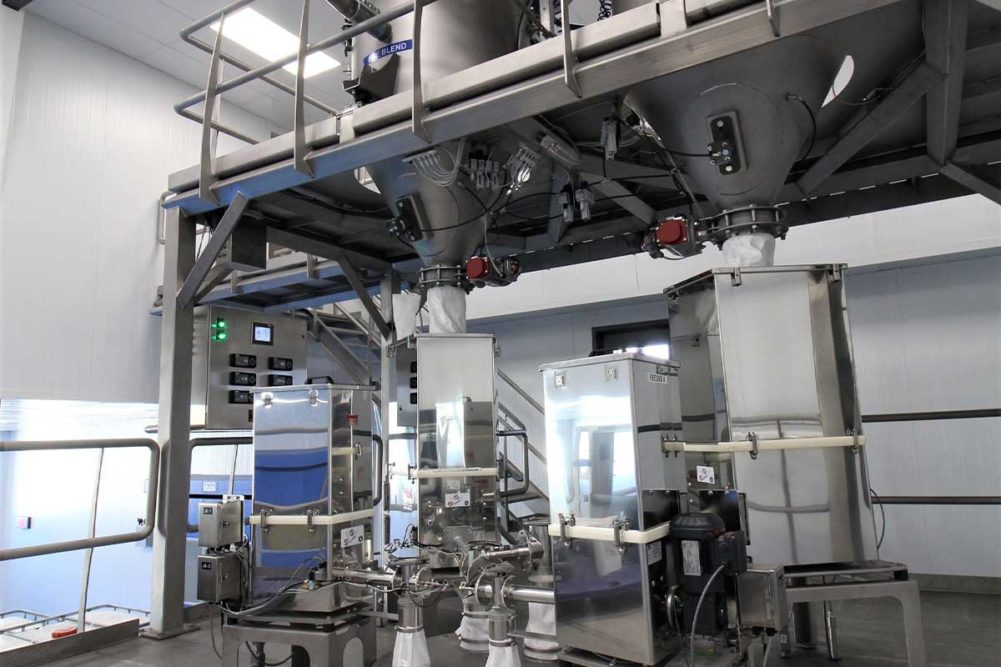Another aspect of accuracy is flow control or restricting the rate at which the ingredients move through the system. Without this, it’s impossible to control accuracy as ingredients are moved to and from the scale. This also keeps everything moving at a pace to keep up with production.
“Frequently, when you talk about minors, there is a flow rate requirement,” said Darren Adams, vice president, engineering, The Fred D. Pfening Co. “We only have a couple of minutes to get this ingredient into our batch based on our downstream process.”
This is where it becomes difficult to combine minors and micros into one system. Not all micro systems can weigh and deliver minors fast enough. If it is capable of delivering ingredients at the required flow rate, then the systems can be combined.
Batch cycle times become very important here, and this is where automation comes into play.
“The smaller the ingredient weighments are and the more critical the ingredient is and the faster you have to produce batches, the more important it is to include automation in your weighing solution,” said Mike Drew, engineering supervisor, Sterling Systems & Controls.
While manual scaling can be effective and accurate, faster batch cycles create more opportunities for error. Automation can remove that error and keep up with production.
“The automation, or process control piece, is critical to the overall system function,” said Jason Stricker, director of sales and marketing, Shick Esteve. “The reporting features available in process software such as Clarity by Shick Esteve provide valuable data to the baker, data that ensure they are maintaining the highest quality and consistency as dictated by their formula while also making sure they are operating the line at the highest efficiencies. Knowing how to meld the mechanical design with the automation functions is the key feature to successful implementation.”
Adding software controls to well-designed technology allows the micro and minor ingredient system to adapt dosing parameters to different ingredient needs. Bühler’s Mercury control system includes a weighing optimization algorithm that adjusts the dosing elements of the weighing system to achieve the optimum accuracy.
“For example, salt has significantly different bulk density than wheat gluten, so various parameters, fast dosing, slow dosing, cut-off time are all adjustable through the automation system to achieve optimum weighing for the various ingredients,” said John Hunter, sales account manager, Bühler Group.
This article is an excerpt from the October 2020 issue of Baking & Snack. To read the entire feature on ingredient handling, click here.





